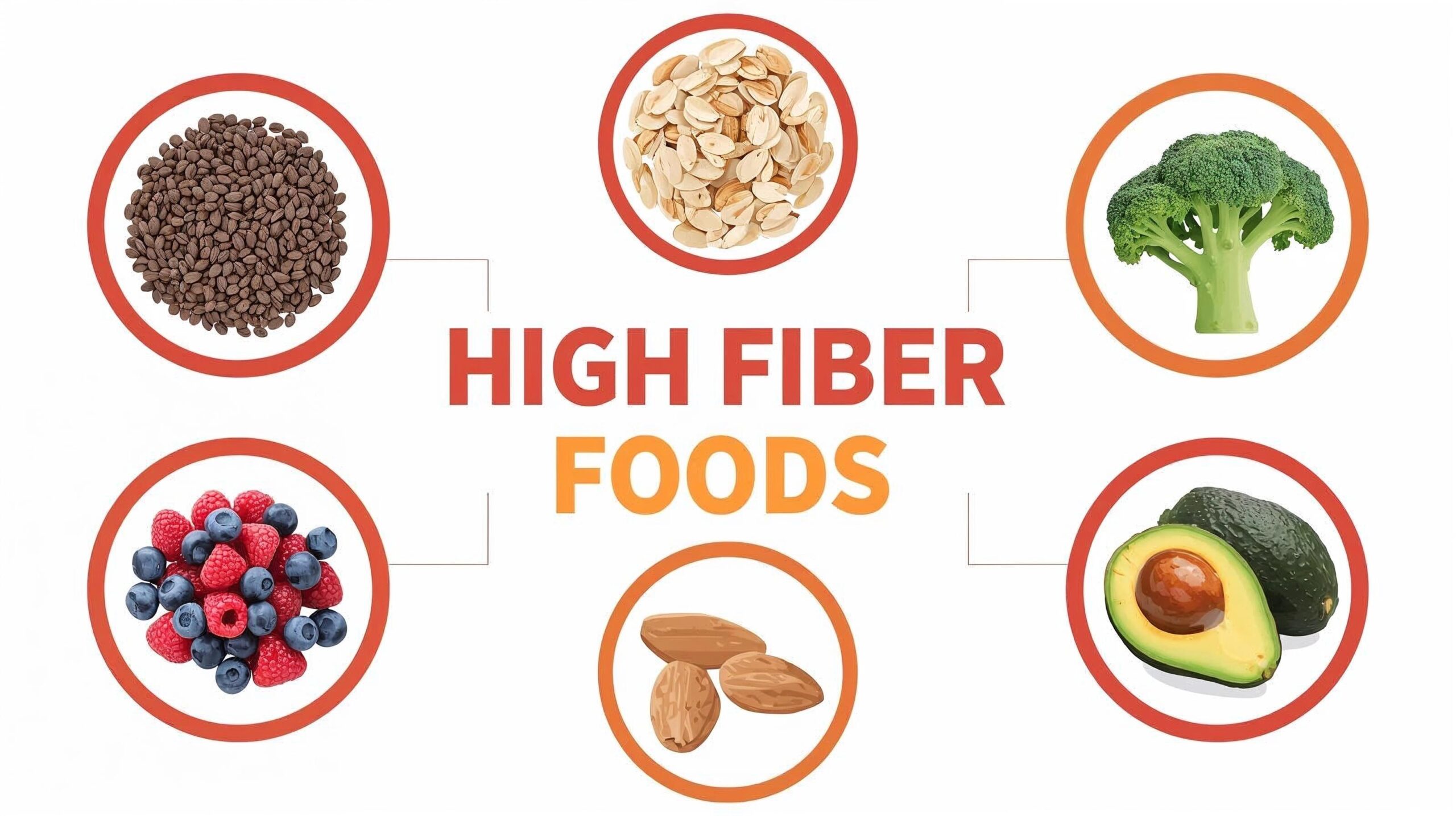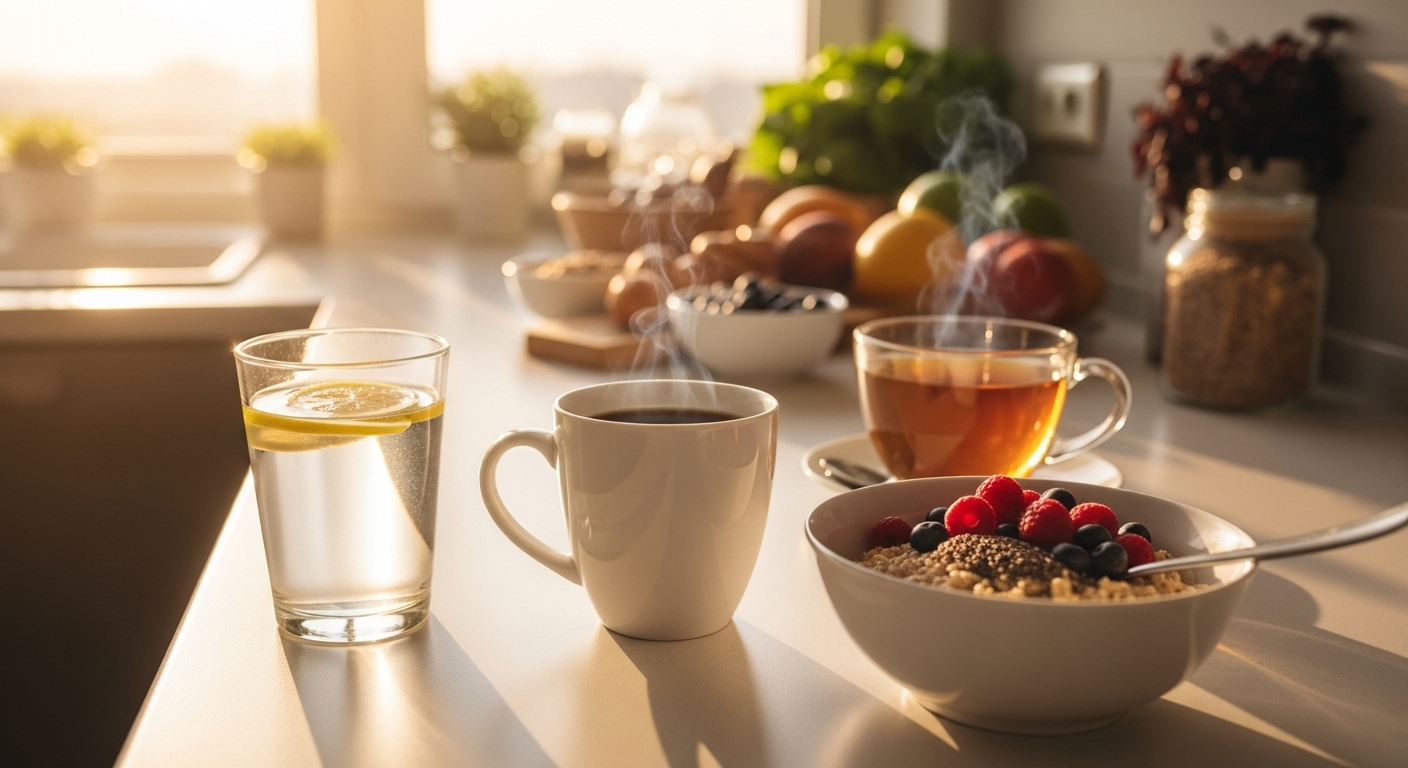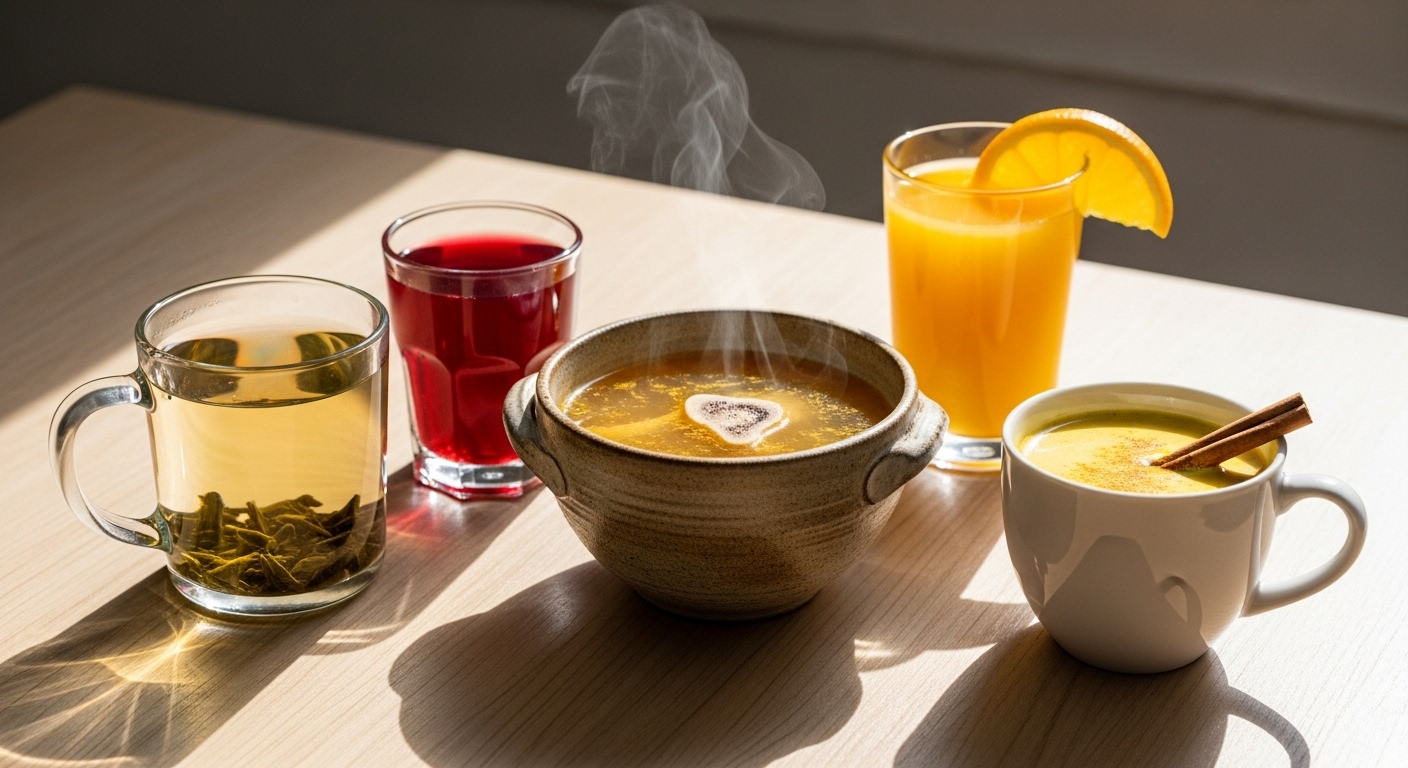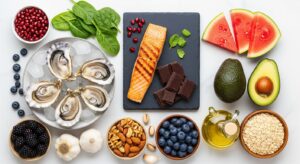High-Fiber Foods: The Ultimate Guide to Lower Cholesterol, Better Skin, and Gut Health
Discover the power of fiber-rich foods to transform your health from the inside out
You’ve probably heard that eating more fiber is good for you, but did you know that this simple dietary change could be your secret weapon for lowering cholesterol, achieving radiant skin, and maintaining optimal gut health? Recent research reveals that most Americans consume only half the recommended daily fiber intake—and they’re missing out on some pretty incredible health benefits.
Let’s dive into the science-backed world of fiber and explore how the right foods can revolutionize your wellness journey.
Why Fiber Deserves a Spot on Your Plate
Fiber is essentially the indigestible part of plant foods that passes through your digestive system relatively intact. While that might sound unimpressive, fiber works behind the scenes as one of nature’s most powerful health allies.
The Institute of Medicine recommends consuming about 14 grams of fiber for every 1,000 calories you eat daily. For most adults, that translates to 25-38 grams per day—but national surveys show 95% of Americans fall short of this target.
The Triple Threat: How Fiber Transforms Your Health
1. Cholesterol Control That Actually Works
Here’s where things get exciting. Some studies suggest that dietary fiber, particularly soluble fiber, may provide comparable cholesterol-lowering effects to statins, with fewer side effects and lower costs.
The mechanism is pretty straightforward: soluble fiber forms a gel-like substance in your digestive tract that binds to cholesterol-containing bile acids, preventing them from being reabsorbed. Your liver then has to use existing cholesterol to make new bile acids, effectively lowering your blood cholesterol levels.
The numbers speak for themselves: 3 g soluble fiber from oats (3 servings of oatmeal, 28 g each) can decrease total and LDL cholesterol by <0.13 mmol/L. While that might seem modest, it’s a meaningful reduction that can contribute to heart health when combined with other dietary changes.
2. Gut Health Revolution
Your gut microbiome—the trillions of beneficial bacteria living in your digestive system—thrives on fiber. Studies show that getting enough fiber strengthens the immune system, supports gut health, reduces inflammation and risk for heart disease, stroke, hypertension, obesity, Type 2 diabetes, and several cancers, including colon and breast cancer.
When fiber reaches your colon, it ferments and produces short-chain fatty acids (SCFAs) like butyrate, propionate, and acetate. These compounds don’t just feed your good bacteria—they also help maintain the integrity of your intestinal lining and reduce inflammation throughout your body.
3. Skin Health from the Inside Out
Here’s something most people don’t realize: Thanks to the close relationship between skin and gut health, fiber may be the skin’s greatest ally. The fermentation of fiber-rich foods generates those same SCFAs we mentioned, which help heal the skin from the inside out.
Research shows that SCFAs help tighten up loose cell junctions and seal a leaky gut. Externally, they help protect the skin by making it more resistant to bacterial overgrowth. Think of it as feeding your skin from within—creating the foundation for that healthy glow everyone’s chasing.
The Fiber All-Stars: Foods That Pack a Punch
Seeds and Nuts: The Fiber Champions
Chia Seeds (34.4g per 100g) These tiny powerhouses top the fiber charts. Just two tablespoons provide about 10 grams of fiber—nearly half your daily needs. They’re also loaded with omega-3 fatty acids and protein.
Almonds (13.3g per 100g) Beyond their satisfying crunch, almonds deliver substantial fiber along with vitamin E, magnesium, and healthy fats. A quarter-cup serving provides about 4 grams of fiber.
Sunflower Seeds (8.6g per 100g) Sunflower seeds contain vitamins, flavonoids, and mineral elements that are great for our health. These seeds are anti-inflammatory and antioxidant, with studies suggesting they can lower cholesterol, maintain healthy blood pressure, and protect the skin.
Legumes: The Protein-Fiber Combo
Lentils (10.7g per 100g) Lentils are nutritional powerhouses. They’re low in fat, high in protein and filled with fiber. They cook quickly and work beautifully in soups, salads, and as meat substitutes.
Black Beans (15g per cup, canned) These versatile legumes are high in protein, potassium and antioxidants, too, which makes them a tasty and healthy choice.
Fruits: Nature’s Fiber Delivery System
Avocados (6.7g per 100g) Don’t let their creamy texture fool you—avocados are fiber powerhouses packed with heart-healthy monounsaturated fats.
Raspberries (6.5g per 100g) These antioxidant-rich berries provide more fiber per cup than most other fruits, plus vitamin C and manganese.
Apples (2.4g per 100g) Apple pectin may have many health benefits, such as a reduced risk of heart disease and improved gut function. Remember to eat the skin—that’s where much of the insoluble fiber lives.
Vegetables: The Everyday Heroes
Brussels Sprouts (6.4g per cup, cooked) Cruciferous vegetables, a vegetable family including broccoli, cauliflower, brussel sprouts, cabbage, kale, and turnips, are known for their high fiber content.
Broccoli (2.6g per 100g) This nutritional superstar provides fiber along with vitamin C, vitamin K, and powerful antioxidants that may help fight cancer.
Carrots (2.8g per 100g) Carrots are best known for preserving eye health. While they can help maintain good vision, they’re also a great source of fiber (4.78 grams per cup). Plus, a 2023 study suggests they may prevent multiple types of cancer, including breast, lung, prostate, and pancreatic cancer.
Whole Grains: The Sustained Energy Sources
Oats (10.1g per 100g) Oats contain beta-glucan, a particularly powerful type of soluble fiber that reduces the amount of cholesterol in the blood and helps control blood sugar levels.
Popcorn (14.5g per 100g) Yes, popcorn! Air-popped popcorn is a whole grain that’s surprisingly high in fiber. Just skip the butter and excessive salt.
The Weight Management Connection
Here’s a bonus benefit: fiber is your ally in maintaining a healthy weight. Soluble fiber absorbs water and swells in your stomach, making you feel full with fewer calories. It slows digestion. This keeps you satisfied longer and stabilizes blood sugar to reduce cravings.
According to a 2024 Mayo Clinic report, people who increased their daily fiber intake by just 10 grams lost more weight—even without changing anything else about their diet.
Making the Fiber Transition: Your Action Plan
Start Slowly
Adding too much fiber too quickly can lead to digestive discomfort. Increase your intake gradually over 1-2 weeks, adding about 5 grams every few days.
Hydration is Key
Fiber soaks up water. Drink 8–10 glasses/day to help it work effectively. Without adequate water, fiber can actually cause constipation.
Mix Your Sources
Aim for a variety of fiber-rich foods to get both soluble and insoluble types. Many plant-based foods offer both types of fiber. For example, the flesh of an apple has soluble fiber, and the skin contains insoluble fiber.
Sample Daily Menu
Here’s what 25-30 grams of fiber might look like in practice:
Breakfast: Bowl of oatmeal (4g) with sliced banana (3g) and berries (4g)
Lunch: Large salad with chickpeas (6g) and avocado (5g)
Snack: Apple with skin (4g)
Dinner: Brown rice (2g) with steamed broccoli (3g)
The Bottom Line
The research is clear: fiber isn’t just about digestive health. Those who had “aged successfully” after a decade (meaning they were free of cancer, heart disease, and diabetes, and had good overall cognitive, physical, and cardiovascular function) consumed an average of 29 grams of fiber per day.
Whether you’re looking to lower your cholesterol, achieve healthier skin, improve your gut microbiome, or maintain a healthy weight, fiber-rich foods offer a simple, evidence-based path forward. The best part? You don’t need expensive supplements or complicated protocols—just real, whole foods that have been nourishing humans for thousands of years.
Start where you are, make gradual changes, and let the power of fiber work its magic on your health. Your future self will thank you for taking this simple but transformative step.
Looking to optimize your health naturally? Start by adding just one high-fiber food to each meal. Small changes compound into remarkable results over time.














Post Comment